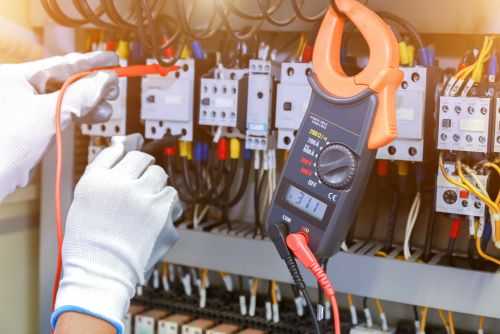Low Voltage Directive Guide
The Low Voltage Directive 2014/35/EU, also known as the LVD, is a set of product safety requirements that apply to electrical equipment in the...
We're actively recruiting for a range of roles across sales, engineering, IT and warehouse. Check our careers page to see open positions including apprenticeships.

Whether you’re moving a single piece of equipment or an entire production line, our trusted team of engineers can support every step of your move, from rigging to end-to-end relocation support across the globe.

Table of Contents
.jpeg?width=800&height=533&name=Machanical%20Machinery%20(1).jpeg)
The Machinery Directive 2006/42/EC is a set of EU health and safety requirements that apply to new and modified machinery used in the workplace.
Their purpose is to prevent machinery and equipment from causing harm or damage to users and their environments.
It’s also one of several directives that are covered by the CE marking regulations. If applicable, demonstrating compliance with the Machinery Directive is a mandatory part of the CE marking process for most products, equipment, and machinery sold within the European Economic Area (EEA).
This guide explains what the Machinery Directive covers, who it applies to, what testing and documentation are required, and how to demonstrate full compliance to support CE marking.
You can download the full version of the Machinery Directive here.
The Machinery Directive applies to new and significantly modified machinery to ensure that it does not present risks to health, safety, or the environment.
The regulations define “Machinery” as:
Thus, products missing only the electric motor, requiring mounting (e.g. a hydraulic lifting arm) onto a vehicle or structure/building), or to be assembled with others, are all regarded as machinery in the strict sense.
Other items covered by the regulations include:
Machinery Directive applies to:
Key responsibilities under the directive include:
In Great Britain, the Health and Safety Executive (HSE) enforces regulations set out by the Machinery Directive.
Non-compliance with the Machinery Directive is an offence that can lead to a fine, imprisonment of up to two years, or both. In most cases, HSE will immediately recall non-compliant equipment and products.
For organisations performing conformity assessments, two routes are permitted by the Machinery Directive.
The Machinery Directive specifies a list of 23 machines for which it is mandatory to involve a Notified Body in the conformity assessment:
For a detailed version of the Annex IV list, see page 45 of the full Machinery Directive downloadable above.
If you’re able to and would like to self-certify, it involves a comprehensive analysis of all identifiable risks.
Using the harmonised standards that apply to your machinery, create or use an audit checklist to evaluate your machine’s design and function. Go through each requirement line by line, recording whether the machinery meets, partially meets, or fails to meet the criteria.
For every hazard found, carry out a structured risk assessment:
Using the checklist and risk assessments, prepare a technical report. This report should:
Under the Machinery Directive, you are required to establish technical documentation that demonstrates conformity equipment with the Directive's essential requirements.
This documentation must be sufficiently detailed to allow for the assessment of the product's compliance and should encompass all relevant aspects of design, manufacture, and operation.
The technical documentation should include:
The manufacturer must keep this documentation for 10 years after the equipment is placed on the market and should make it available to the competent national authorities upon request.
Many machines fall under more than one EU directive. And the Machine Directive doesn’t cover all safety or performance aspects of a product.
For example, equipment may also fall under the Low Voltage Directive or the EMC Directive, as well as Machinery Directive.
In these cases, the manufacturer must:
Note that, the CE mark does not indicate conformity with a single directive. It represents compliance with all EU legislation applicable to the product.
Download our free guide here for more information on complying with CE regulations.
Our start-to-finish Machinery Safety Testing service for large and medium-sized capital equipment covers every step of the process, from testing against relevant measures to compiling your technical documentation and addressing remedial actions.
Head to our Machinery Safety Testing service page here to find out more.
Stay up to date with the latest news and resources from our experts.

The Low Voltage Directive 2014/35/EU, also known as the LVD, is a set of product safety requirements that apply to electrical equipment in the...

The Electromagnetic Compatibility (EMC) Directive 2014/30/EU is one of the key pieces of legislation that governs the placement of electrical and...

If your business owns, operates or controls work equipment, you must comply with the Provision and Use of Work Equipment Regulations 1998 (frequently...